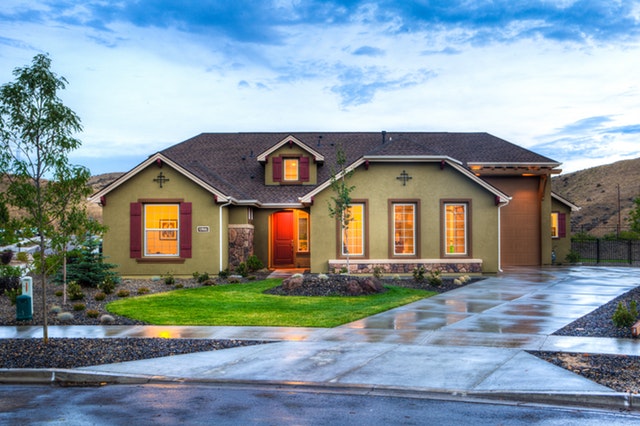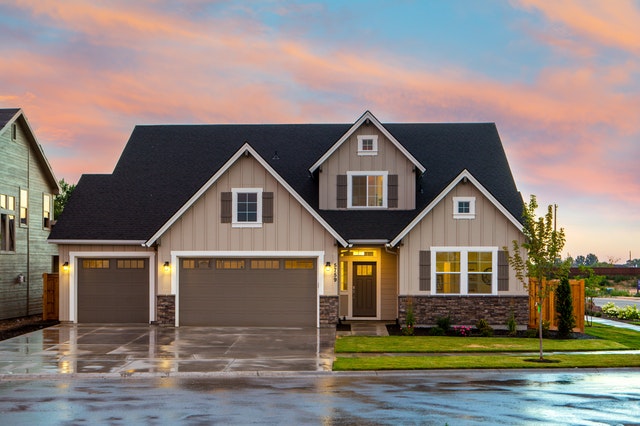 A young long-haul trucker driver once took an elder’s advice and invested all of his money into real estate. Even though he was seldom at home to enjoy the fruits of his labor, he hired a property management company to handle the properties. The advice that stuck with the driver was simple. “They’re not making any more of it, land that is.”
A young long-haul trucker driver once took an elder’s advice and invested all of his money into real estate. Even though he was seldom at home to enjoy the fruits of his labor, he hired a property management company to handle the properties. The advice that stuck with the driver was simple. “They’re not making any more of it, land that is.”
In terms of growing personal wealth, the real estate market may fluctuate, interest rates change, and the GDP can bounce like a ball. But, land is permanent. That may seem like a simplistic view of wealth management. Maybe it is. But that trucker retired early with multiple investment properties and a reasonably wealthy man.
His portrait in wealth management success highlights the notion that real estate remains a strong financial driver. The next logical question is whether or not now is the time to build a powerful real estate portfolio.
Current Market Conditions
Real estate investment does not necessarily follow the popular stock market thinking about buying low and selling high. In fact, investors such as the trucker had no plans to sell at all. That being said, the current real estate trends are widely considered a “seller’s market.” Are they really?
With Millennials and soon Generation Z buying up homes, inventory remains lower than demand. That naturally has resulted in an uptick in listing prices. Couple the supply and demand issue with a Fed raising rates and one might think this is a bad time to buy. Nothing could be further from the truth.
Buying rental properties are long-term investments. Buyers would be wise to do the math on how much the monthly mortgage, insurance, taxes and overhead measure against the potential revenue. Some property owners do their math based on 10 months rather than 12 to account for unexpected expenses. If the math works, it could be a valuable asset.
Real Estate Less Risky Than Stocks
Return on investment in real estate has the potential to far outpace stock buys. Consider that when you purchase a stock, things outside your control impact value and dividends. Think for a moment about how Elon Musk turned Tesla stocks into a roller coaster ride due to a few odd tweets and media interviews.
Owning property insulates investors from many external forces. Over time, rental revenue pays down the note. This allows owners the ability to siphon off money or leverage equity for additional real estate buys. With measured determination, your wealth management portfolio could include multiple properties that are paid off at retirement age. It worked for a truck driver who took some simple advice from an elder.
There’s little doubt that real estate remains a strong asset for increasing personal wealth. If you are considering a purchase, be sure to contact your trusted real estate professional as soon as possible.
 Last week’s economic readings included reports on home prices, new and pending home sales and remarks released by the Federal Open Market Committee of the Federal Reserve. Weekly readings on average mortgage rates and first-time jobless claims were also released.
Last week’s economic readings included reports on home prices, new and pending home sales and remarks released by the Federal Open Market Committee of the Federal Reserve. Weekly readings on average mortgage rates and first-time jobless claims were also released. It’s not uncommon today to move several times during adulthood, whether across town or across the country. Seasoned home buyers have been through the real estate process, often more than once. However, even if the home purchase has become routine, there are mistakes that can be avoided.
It’s not uncommon today to move several times during adulthood, whether across town or across the country. Seasoned home buyers have been through the real estate process, often more than once. However, even if the home purchase has become routine, there are mistakes that can be avoided. The Federal Open Market Committee of the Federal Reserve announced that it raised the target federal funds rate to a range of 2.00 percent to 2.25 percent. This was the third consecutive increase in the Fed’s key interest rate and was the eighth time the Fed raised its key interest rate since 2015.
The Federal Open Market Committee of the Federal Reserve announced that it raised the target federal funds rate to a range of 2.00 percent to 2.25 percent. This was the third consecutive increase in the Fed’s key interest rate and was the eighth time the Fed raised its key interest rate since 2015. Homeowners looking to maximize their return on investment often want to know what season best achieves that goal. Getting near or full asking price can be influenced by a wide range of factors, including market trends, inventory and interest rates to name a few.
Homeowners looking to maximize their return on investment often want to know what season best achieves that goal. Getting near or full asking price can be influenced by a wide range of factors, including market trends, inventory and interest rates to name a few. The average homeowner feels secure knowing they have insurance in the event of a severe weather calamity. Most people believe that no matter what happens, they have paid for protection against disaster.
The average homeowner feels secure knowing they have insurance in the event of a severe weather calamity. Most people believe that no matter what happens, they have paid for protection against disaster.